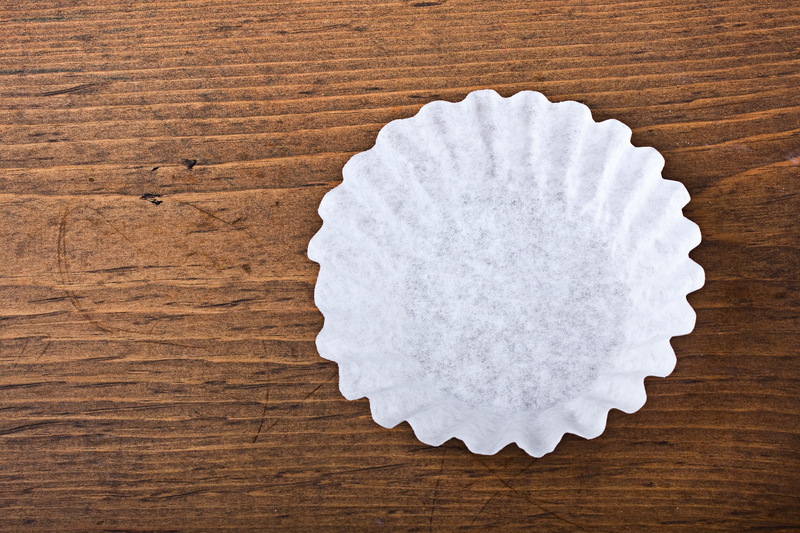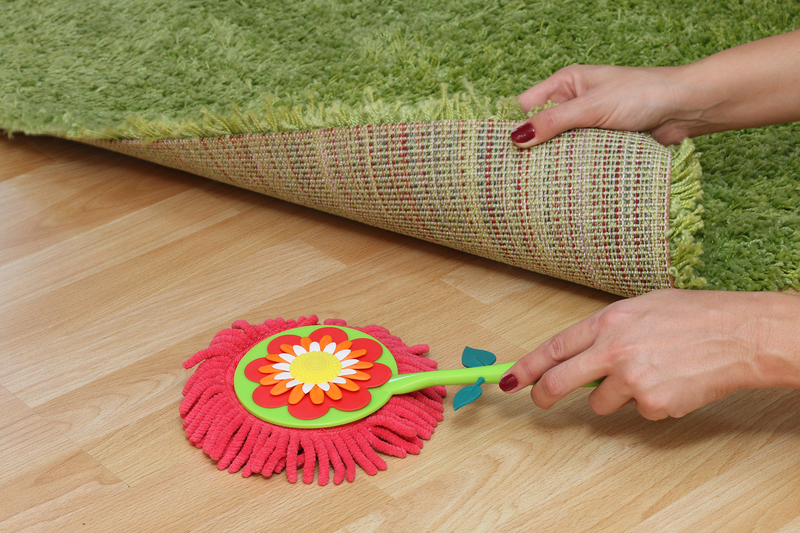Learn to Keep Velvet Curtains Pristine with Smart Washing Techniques
Posted on 18/05/2025
Learn to Keep Velvet Curtains Pristine with Smart Washing Techniques
Velvet curtains lend an elegant, luxurious charm to any room, instantly elevating your interior decor. However, their plush texture and opulent sheen require specialized care to maintain their pristine look. Whether you're a homeowner, interior design enthusiast, or simply a lover of beautiful textiles, this comprehensive guide will provide you with proven, smart washing techniques to keep your velvet curtains immaculate year after year.

Why Proper Velvet Curtain Care Matters
Velvet is a unique fabric comprising tightly woven fibers that create a dense, soft pile. This distinctive structure makes velvet highly susceptible to crushing, staining, and distortion if not handled correctly. Understanding how to clean, wash, and maintain velvet curtains is essential to preserve their color, texture, and elegance.
- Incorrect cleaning can flatten the velvet's pile, leaving bald spots or shiny marks.
- Improper washing might cause shrinking, fading, or even irreversible fabric damage.
- Accumulated dust and allergens can deteriorate the fabric and compromise indoor air quality.
Fortunately, with the right knowledge and washing techniques for velvet curtains, you can effortlessly enhance their lifespan and beauty.
Understanding Velvet Curtain Types and Fabric Care Labels
Not all velvet is created equal. Curtains can be crafted from natural fiber velvets like cotton, silk, or mohair, or synthetic versions such as polyester and viscose. Each type demands slightly different cleaning procedures. Always start by identifying your curtain's material and checking the manufacturer's care label before proceeding.
Velvet Fabric Types
- Cotton Velvet: Soft, rich, but prone to shrinking and crushing. Often requires dry cleaning.
- Silk Velvet: Extremely delicate and luxurious. Should only be professionally cleaned.
- Synthetic Velvet (Polyester, Rayon, Viscose): More durable and often safe for gentle home washing.
- Crushed Velvet: Has an intentionally textured appearance, sometimes more forgiving to gentle cleaning.
Interpreting Washing Symbols
Typical care labels include symbols for machine wash, hand wash, or dry-clean only. When in doubt, always err on the side of caution and choose the gentlest method.
Pro Tip: If the tags are missing or faded, consult the retailer or opt for professional cleaning for antique or valuable velvet curtains.
Preparation: Keeping Velvet Curtains Clean Between Washes
Before diving into washing, it's essential to follow a regular curtain care routine to minimize dust build-up and keep your velvet looking new:
- Weekly Dusting: Use a soft brush or clean, lint-free cloth to gently dust the surface. Always brush in the direction of the pile.
- Vacuuming: Attach the soft brush nozzle and vacuum using low suction. This removes debris without disturbing the pile.
- Spot Cleaning: Attend to spills immediately by blotting (not rubbing) with a clean, dry cloth.
- Steam Refresh: A handheld steamer can revive velvet's plush texture by gently loosening the fibers and removing wrinkles.
Consistent maintenance postpones the need for frequent washing, preserving your curtains' vivid color and plushness.
The Best Ways to Wash Velvet Curtains at Home
Should You Machine-Wash, Hand-Wash, or Dry Clean Velvet Curtains?
Before selecting a cleaning method for your velvet curtains, consider their fiber composition:
- Dry Clean Only: Most natural-fiber and blended velvet, especially silk or high-value curtains.
- Gentle Machine/Hand Wash: Durable synthetics and some cotton velvets with manufacturer approval.
Important: When in doubt, always opt for professional dry cleaning or perform a small spot test on an inconspicuous area to check for colorfastness and shrinkage.
How to Hand-Wash Velvet Curtains
Hand-washing is generally safer for velvet than machine washing. Follow these steps for optimal results:
- Remove Dust and Debris: Give your curtains a good shake and brush off surface particles.
- Fill a Clean Tub/Basin: Use cold or lukewarm water and add a few drops of mild, bleach-free detergent.
- Submerge and Swish: Gently immerse the curtains, agitating lightly. Don't scrub or wring.
- Soak: Let the curtains soak for 10-15 minutes.
- Rinse Thoroughly: Drain soapy water, refill with clean cold water, and carefully rinse until water runs clear.
- Press to Remove Water: Gently press, but don't twist the curtain. Press between clean towels to blot excess moisture.
How to Machine Wash Velvet Curtains Safely
If your curtain label confirms machine-washing is safe, take extra precautions:
- Use a Delicate Cycle: Select the lowest spin and cold water.
- Laundry Bag: Place curtains in a mesh or pillowcase to prevent snags.
- Mild Detergent: Opt for a gentle, bleach-free formula.
- Minimal Load: Wash curtains alone or with similar fabrics to avoid friction.
Drying Velvet Curtains the Right Way
Maintaining the pile and avoiding shrinkage is critical when drying velvet curtains. Here's how:
- Never Use a Dryer: Heat and tumbling will crush or shrink velvet. Air-dry only.
- Hang Properly: Suspend curtains from a sturdy rod or lay flat on a clean towel. Smooth out wrinkles and align the pile direction.
- Avoid Direct Sunlight: Sun can cause fading. Choose a shaded, breezy spot.
- Patience Pays: Velvet can take a while to dry fully. Wait until completely dry before rehanging to prevent musty odors or mildew.
Dealing with Common Velvet Curtain Cleaning Challenges
How to Remove Stains from Velvet Curtains
- Blot, Don't Rub: Gently dab liquid spills with a clean, dry cloth to lift moisture without damaging the pile.
- Gentle Detergent Solution: Mix a small amount of mild detergent with cold water, apply using a microfibre cloth, then blot dry.
- Avoid Over-Wetting: Too much moisture can leave watermarks or shrink the fabric.
- Professional Help: For stubborn or oily stains, consult a specialist cleaner.
How to Restore Velvet's Pile
If your velvet curtains develop flat patches or lose their luster:
- Steam with Care: Use a handheld steamer held a few inches away, brushing gently with a velvet brush as you go.
- Avoid Excess Pressure: Pressing too hard can leave permanent marks.
- Freezing Technique: For crushed pile, place a damp cloth over the area and gently press with a cool iron (test a small area first).
Preventative Maintenance for Pristine Velvet Curtains
The best way to keep velvet curtains pristine is through regular, gentle maintenance:
- Monthly Freshening: Use a steamer or brush to lift the pile and remove dust.
- Rotate Curtains: Swap curtain panels every few months to ensure even wear and sun exposure.
- Avoid Contact with Water: Humidity can leave spots -- keep curtains away from damp windows or steamy rooms.
- Pet and Child Protection: Keep pets' claws and sticky hands off the fabric whenever possible.
FAQ: Smart Washing Techniques for Velvet Curtains
How Often Should I Wash Velvet Curtains?
Answer: Ideally, velvet curtains should only be washed once or twice a year, depending on their exposure to dust and dirt. In-between, use regular vacuuming and spot cleaning to maintain freshness.
Can I Iron Velvet Curtains?
Answer: Never press an iron directly onto velvet. Instead, use a garment steamer to remove wrinkles and refresh the fabric. If ironing is absolutely necessary, do it with a damp cloth on a low setting and only on the reverse side.
What's the Best Way to Store Velvet Curtains?
Answer: Hang velvet curtains in a cool, dry, dark place to avoid creases and fading. If you must store them folded, use acid-free tissue paper between folds and keep them away from direct sunlight.
Can I Use Fabric Softeners or Bleach?
Answer: Avoid both. Bleach can damage the pile and cause discoloration, while softeners might leave residues that dull velvet's sheen.
Mistakes to Avoid When Cleaning Velvet Curtains
- Over-aggressive Washing: Rubbing or wringing will ruin the pile.
- Incorrect Detergents: Harsh or bleach-based products can damage fibers.
- Hot Water: Heat may shrink or distort the fabric.
- Skipping Spot Tests: Always test cleaning solutions on a hidden section first.
The Importance of Professional Curtain Cleaning
For high-end, antique, or custom velvet curtains, professional cleaning is recommended at least once a year. Their specialized equipment and expertise ensure thorough cleaning without risking shrinkage or pile damage. For everyday synthetic velvet curtains, you can extend professional visits with careful at-home maintenance.

Velvet Curtain Care: Eco-Friendly Tips
If sustainability is important to you, consider these eco-friendly velvet curtain cleaning tips:
- Choose Plant-Based Detergents: These break down easily and are gentle on fabric and waterways.
- Wash Less, Air More: Frequent washing shortens curtain lifespan. Air out curtains outside on dry, breezy days to freshen without chemicals.
- Reusable Cleaning Cloths: Opt for washable microfibre instead of disposables when spot-cleaning.
Conclusion: Enjoy Spotless, Luxurious Velvet Curtains for Years
Velvet curtains bring sophistication and warmth to any living space. By following these smart washing techniques -- regular maintenance, gentle cleaning, and thoughtful drying -- you can keep your velvet curtains pristine for years of beauty and enjoyment. Always respect the unique nature of velvet and don't hesitate to call in the professionals when needed.
With the right approach, caring for velvet curtains becomes simple, sustainable, and rewarding, allowing you to enjoy their rich color and texture while maintaining a healthy, stylish home.
Summary of Smart Velvet Curtain Washing Steps
- Identify your velvet type and read fabric care instructions.
- Dust/vacuum weekly and perform prompt stain removal.
- For home washing, use cool water, mild detergent, and never wring or twist the fabric.
- Always air dry away from sunlight; restore pile with a steamer or soft brush.
Use these velvet care tips as your go-to resource to keep every velvet curtain in your home shining and beautiful for the long term.









